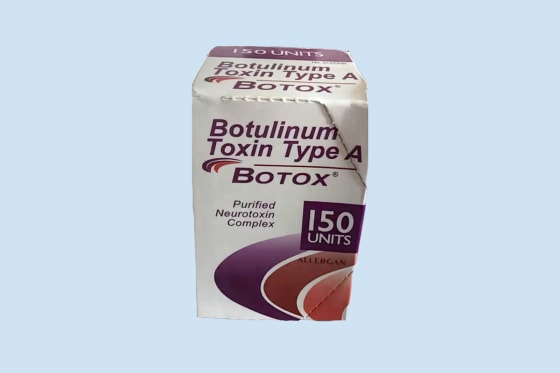Cheap, counterfeit Botox given by people not trained to do facial injections, in places without a doctor on standby, became a dangerous combination that landed more than a dozen women in the hospital.
In at least one case, a woman became so ill that she had to be placed on a ventilator to help her breathe.
Seventeen women in nine states have experienced symptoms ranging from blurry vision to trouble swallowing and breathing after receiving what they thought were Botox injections to smooth fine lines and wrinkles. Thirteen were hospitalized, and several needed treatment in the intensive care unit.
A report published Thursday by the Centers for Disease Control and Prevention provided alarming details of patients in New York City and Tennessee. One woman from Kentucky was admitted to the hospital in Tennessee. The women ranged in ages between 26 and 55.
Four women attended a gathering at a relative’s home in Tennessee to get Botox injected into their faces, including the lines between their eyebrows, about three days before their symptoms began. An investigation later showed the injected product was counterfeit and given by a person who was not licensed.
“In some cases, providers were concerned about patients’ breathing to the point where they were admitting them to intensive care units to be able to monitor them more closely,” said Dr. Christine Thomas, a medical director at the Tennessee Department of Health and lead author of the new report.
Thomas, who was an epidemic intelligence service officer at the CDC at the time of the investigation, called the situation a “perfect storm.”
“We were seeing the injections happening in homes from people who weren’t licensed, and there was counterfeit product,” Thomas said.
NBC News has learned of one of the most disturbing examples of fake Botox-related injury. A 49-year-old woman in Colorado received what she thought was Botox, but her vision soon blurred and her otherwise healthy body became unusually weak.
Nine days went by before the woman was hospitalized with trouble swallowing and breathing. Her condition became so dire that doctors were forced to intubate her and put her on a ventilator to help her breathe.
They had no idea what was wrong with her until a family member mentioned in passing that the woman had recently received Botox injections.
That likely saved the woman’s life, said Grace Nelson, a disease intervention supervisor at the Denver Department of Public Health and Environment who helped lead the investigation.
“The patient was decompensating and in bad condition for us to do an interview,” Nelson said. The family member’s information is what led Nelson’s team to step in and help authorize giving the woman botulinum antitoxin to prevent the poison from causing further damage.
The woman was ultimately hospitalized for more than two weeks and needed further rehabilitation, Nelson said.
Doctors qualified to administer Botox are concerned more patients like the one in Colorado will be injured, especially as unregulated medical spas have grown in popularity.
“I’m extremely worried,” said Dr. Kate Dee, a physician and founder of Glow Medispa in Seattle. “As more and more people order fake Botox off the internet, there could be anything in that vial.”
Fake Botox is not a new phenomenon, said George Karavetsos, a lawyer and former director of the Food and Drug Administration’s Office of Criminal Investigations.
“Counterfeit Botox has been in the U.S. supply chain for at least 20 years,” Karavetsos said. “I have personally investigated and prosecuted cases of people who were either importing counterfeit Botox or formulating their own version of counterfeit Botox here in the U.S. to sell to the domestic market, to med spas and other clinicians.”
Efforts to address the influx of tainted Botox, including catching people responsible for the tainted products in other countries, have been largely unsuccessful, Karavetsos said.
“How do you stop it? It’s education to the consumer.”
What to know when getting Botox
There are several ways to identify potentially risky situations.
Ask to check the vials. Thomas said her team found misspellings on the counterfeit bottles. And according to the FDA, the outer carton on counterfeit Botox products:
- Displays the active ingredient as “Botulinum Toxin Type A” instead of “OnabotulinumtoxinA.”
- Indicates 150-unit doses, which is not a unit made by AbbVie.
- Is printed in a language other than English.
Only get Botox in a licensed medical setting from a licensed provider.
“A cosmetology license is not a license to practice medicine,” Dee said. And if the Botox in question is being given in a salon, a home or a hotel room, that’s “a giant red flag because those places don’t usually have a doctor anywhere near them.”
Thomas recommended making sure providers are licensed appropriately ahead of time.
The Tennessee Department of Health, for example, has a link to search for licensed facilities, including medical spas, in that state.
Don’t be fooled by appearances, Karavetsos advised: “People go in and see a person wearing a white coat. They see what purports to be professionals administering Botox. They’re unwitting victims.”
Be wary of deals that are too good to be true. One of the women treated in Tennessee “reported paying less for their injections than we know botulinum toxin costs,” Thomas said.
Dee said that the average price for Botox is roughly $15 a unit, so charging anywhere from $12 to $25 would be reasonable. That accounts for not just the vial itself, but for supplies like rubbing alcohol, gauze, refrigeration and other overhead costs in medical facilities.
If someone is charging far less — $6 to $9 per unit, for example — that’s a warning.
“No one can do that long term and stay in business,” Dee said. “It’s likely those people are doing this illegally.”

